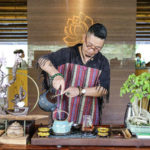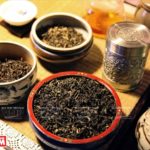Flavan-3-ols is a plant compound found in many foods and beverages, such as tea, berries, raisins, apples, and dark chocolate. For decades, studies have consistently demonstrated flavan-3-ols benefits in reducing risk of lifestyle-related diseases including heart disease, stroke, and type 2 diabetes… by improving blood pressure, cholesterol and blood glucose levels. Furthermore, flavan-3-ols has been proved to help protect human body cells from aging damage.
According to a research published in November by Advances in Nutrition journals, the consumption of 400-600mg of flavan-3-ols per day provides the above health benefits. Such amount of flavan-3-ols per day is equivalent to two cups of tea.
Dr. Kristi Crowe-White, the research leader, said: “Flavan-3-ol-rich foods, such as tea, are easily accessible, affordable and really have positive impact on people’s cardiometabolic health “
Conducted by the collaboration between the The Institute for the Advancement of Food and Nutrition Sciences and the Academy of Nutrition and Dietetics, the study recommended the specific flavan-3-ols amount for daily consumption. It analyzed 157 existing trials and 15 studies on flavan-3-ols effects on human body.
As found by the study, among all evaluated foods and beverages, tea has the highest concentration of flavan-3-ols.
 |
| Illustration – Drinking two cups of tea a day can help reduce high blood pressure and blood lipids. Photo: Freepik |
In April, the The Sixth International Scientific Symposium on Tea & Human Health also indicated that drinking tea can properly support cognitive function.
Herbal teas such as chamomile, mint… contain a natural compound called flavonoids – an antioxidant and L-theanine – an amino acid beneficial to cognition. Studies by Professor Louise Dye, University of Leeds, showed that high L-theanine and lower caffeine amount in tea are useful for concentration ability and attention enhancement.
Follow the charm of delightful tea
Despites having won nine international awards for his tea, Nguyen Cao Son still wants to work harder to preserve the Vietnamese tea culture and tell the world about the tradition. Bui Quynh Hoa reports
Braised Ruoi of Tu Ky
Going to Tu Ky in Hai Duong province, visitors can enjoy specialties made from Ruoi (a kind of rag worm whose scientific name is Tylorrhynchus heterocheatus). They can eat dishes such as Ruoi omelets, rolls of Ruoi or Ruoi cooked with bamboo shoots. Among them, braised Ruoi stands out as an intriguing dish.








